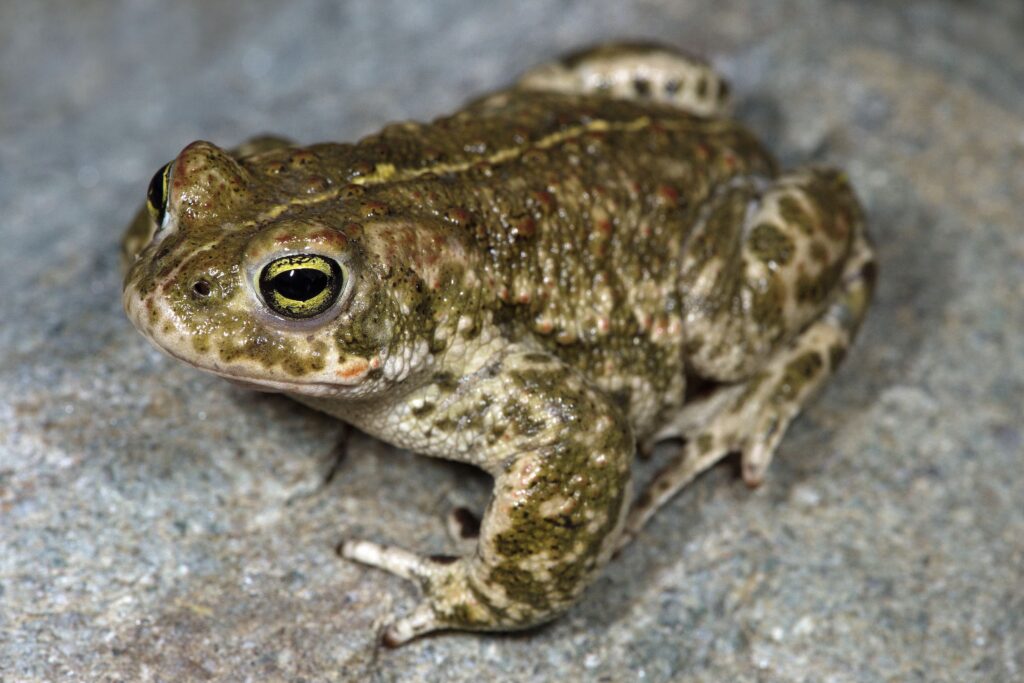The natterjack toad (Epidalea calamita) is a species of toad found in parts of Europe, particularly in sandy habitats such as coastal areas, dunes, heathlands, and grasslands. Here are some key points about the natterjack toad:
- Appearance: Natterjack toads are relatively small compared to some other toad species, measuring around 5 to 8 centimeters in length. They have distinctive yellowish-green warts on their back, which help in camouflaging them in sandy environments. The coloration can vary, but they often have a pale stripe down the middle of their back.
- Habitat: These toads are specifically adapted to sandy habitats, including coastal sand dunes, heathlands, and sandy grasslands. They are less commonly found in other types of environments. The sandy soil provides them with suitable burrowing conditions.
- Breeding: Natterjack toads have a unique breeding behavior compared to other toad species. They are known for their distinctive “nuptial chorus” in which males produce loud, melodious calls to attract females. This behavior typically occurs in spring, and the calls are often described as a “nattering” sound, which is how they got their name.
- Conservation Status: The natterjack toad is considered a species of conservation concern in many parts of its range due to habitat loss and fragmentation. Destruction of their natural sandy habitats, pollution, and urbanization have threatened their populations. Conservation efforts often involve habitat restoration and protection, as well as raising awareness about their importance in the ecosystem.
- Range: Natterjack toads are native to various parts of Europe, including the United Kingdom, France, Spain, Portugal, Italy, and parts of Scandinavia. Their range is not continuous and often consists of isolated populations.
- Diet: These toads are opportunistic feeders, consuming a variety of invertebrates such as insects, spiders, and worms. They use their sticky tongues to catch their prey.
- Adaptations: Natterjack toads have evolved certain adaptations to their sandy environments. They have strong hind legs for burrowing into the sand and escaping predators. Their warty skin helps them blend into the sandy background, providing camouflage.
- Threats: In addition to habitat loss, natterjack toads face threats from predators such as birds, mammals, and other amphibians. They also face risks from diseases that can affect amphibians globally.
Overall, the natterjack toad is an interesting species with unique behaviors and adaptations that have allowed it to thrive in specific sandy environments. However, due to habitat destruction and other threats, they require conservation efforts to ensure their continued survival.
